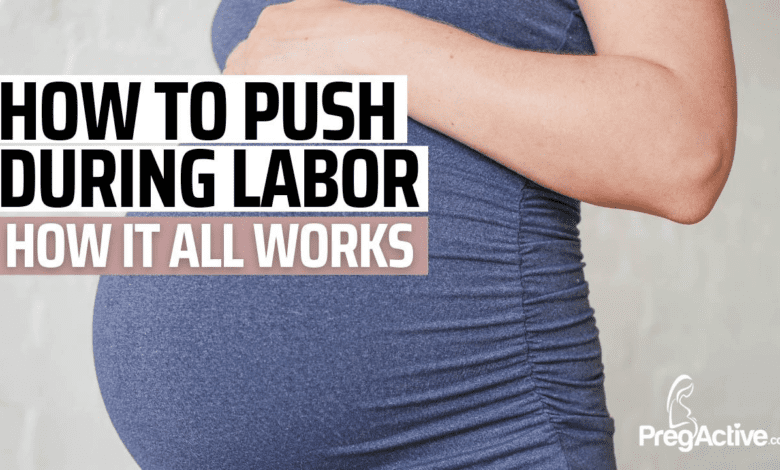How to PUSH DURING LABOR

preparation for childbirth
Jun 27, 2023
Did you know How to PUSH DURING LABOR? Today, I want to help empower you with the knowledge you need to enter your #birth with more confidence and eliminate the fear of the unknown.
The uterus is a muscle and its role, in childbirth, is to contract to help push the baby’s head into the cervix to enlarge the cervix and then for the baby’s head to travel down the birth canal out into the world.
Like any other muscle, it can get tired from working hard. As the uterus gets tired, the contractions become more intense.
Here I show, using a balloon, the role of the uterus and how it works to press the baby down.
Using gravity can help matrix work and the baby will turn down. Swinging, moving bouncing on a ball. Everything helps.
I go over more details on how you can proceed by doing my FREE ACTIVE BIRTH CLASS
Learn more about my full PregActive Birth Prep program
How to PUSH DURING LABOR Video
How to push during labor FAQ
How do you push during labor so you don’t tear?
A good way to do this is to deliver in an upright position. Positions such as squatting or using a birthing stool can also be effective in reducing the risk of tearing. Ideally, you can try to push in a position that is not flat on your back.
What does it feel like to push the baby out?
Many mamas I’ve talked to say they experience increased pressure in their rectum, perineum, and lower back during this stage. You may also feel that rectal pressure feels similar to having a bowel movement when going to the bathroom. When you start to see the baby’s head coming out; you may experience stretching or burning.
Can a woman not push during childbirth?
Not pushing for one to two hours immediately after the second stage of labor begins is a practice called ‘Laboring down’. This exercise can help your baby move down the birth canal more naturally. And it can also reduce the total time you have to push.
Related: PregActive Birth Preparation Course
What is Laboring Down?
As previously discussed, laboring down is the process of not actively pushing once the second stage of labor and intense contractions begin.
Can you refuse to push during childbirth?
You can delay pushing. Before you give birth, you should discuss all options and preferences with your midwife. You can put off pushing until you feel the need to go down.

What is the most painful part of childbirth?
Every woman has a different experience when it comes to childbirth. Many women find that the most painful part of labor and delivery are the contractions, while others may feel that pushing or postpartum is the most painful. You may also experience discomfort or pain during labor and delivery caused by pressure on the bladder and bowels.
What is the hardest part of pushing a baby out?
I think you can see that that is stage 2 of labor – Transition. The contractions are one on top of the other as your cervix dilates to 10 centimeters.
What hurts more contraction or pushing?
Most women will say that having a contraction is the most painful part of childbirth. Some will say that pushing or after delivery hurts the most.
Why do midwives tell you not to push?
This is usually because your cervix is not fully dilated. If the baby is in a position behind the hump you will feel the urge to push before the cervix is fully open.
Can babies come out without being pushed?
Yes. The fetal ejection reflex (Ferguson reflex) is when the body ‘dismisses’ a baby involuntarily without a forced push on your part.
What is the least painful way to give birth?
Your medical practitioner can give you a epidural anesthesia during childbirth. This is regional anesthesia that helps to reduce pain in a specific part of the body.
Related: PregActive Birth Preparation Course


How long does first-time labor usually take?
Again this varies for each woman. But for first-time moms, it can take anywhere from 12 to 19 hours. It may be shorter for mothers who have had children.
Does childbirth smell?
Lochia is the vaginal discharge you have after giving birth. Postpartum bleeding is a normal part of your recovery after birth. It contains a mixture of blood, mucus and uterine tissue and as a result can have a stale, foul smell like menstrual discharge.
How long will the midwife let you push?
When having your first baby, the pushing phase should last no more than three hours. If you have a new baby, it should take no more than 2 hours. Your midwife will support and encourage you as well as your birth partner.
How long do doctors let you push before a C section?
This can be specific to each individual doctor but generally the guideline is for you to push for at least two hours if you have had a baby before and three hours if this is your first baby. You may be encouraged to push longer if you have an epidural and as long as the doctor sees progress.
Why breathe while driving?
Your doctor may encourage you to stop pushing when they see the baby’s head or to take quick shallow breaths. This allows for your tissues to stretch and allows your baby’s head to loosen. It is important to let your health care team guide you through this stage. Learn more about pushing positions.
How long will I bleed after birth?
Postpartum bleeding lasts between four and six weeks after giving birth. Some women may bleed longer or shorter than this.
What is purple pushing?
Direct thrust, also called ‘purple push,’ is when pregnant women are instructed to inhale, exhale, and push for about 10 seconds at a time.





#childbirthducation #birthpreparation #birth #childbirthclass #labor #laboranddelivery #HowtoPUSHDURINGLABOR







